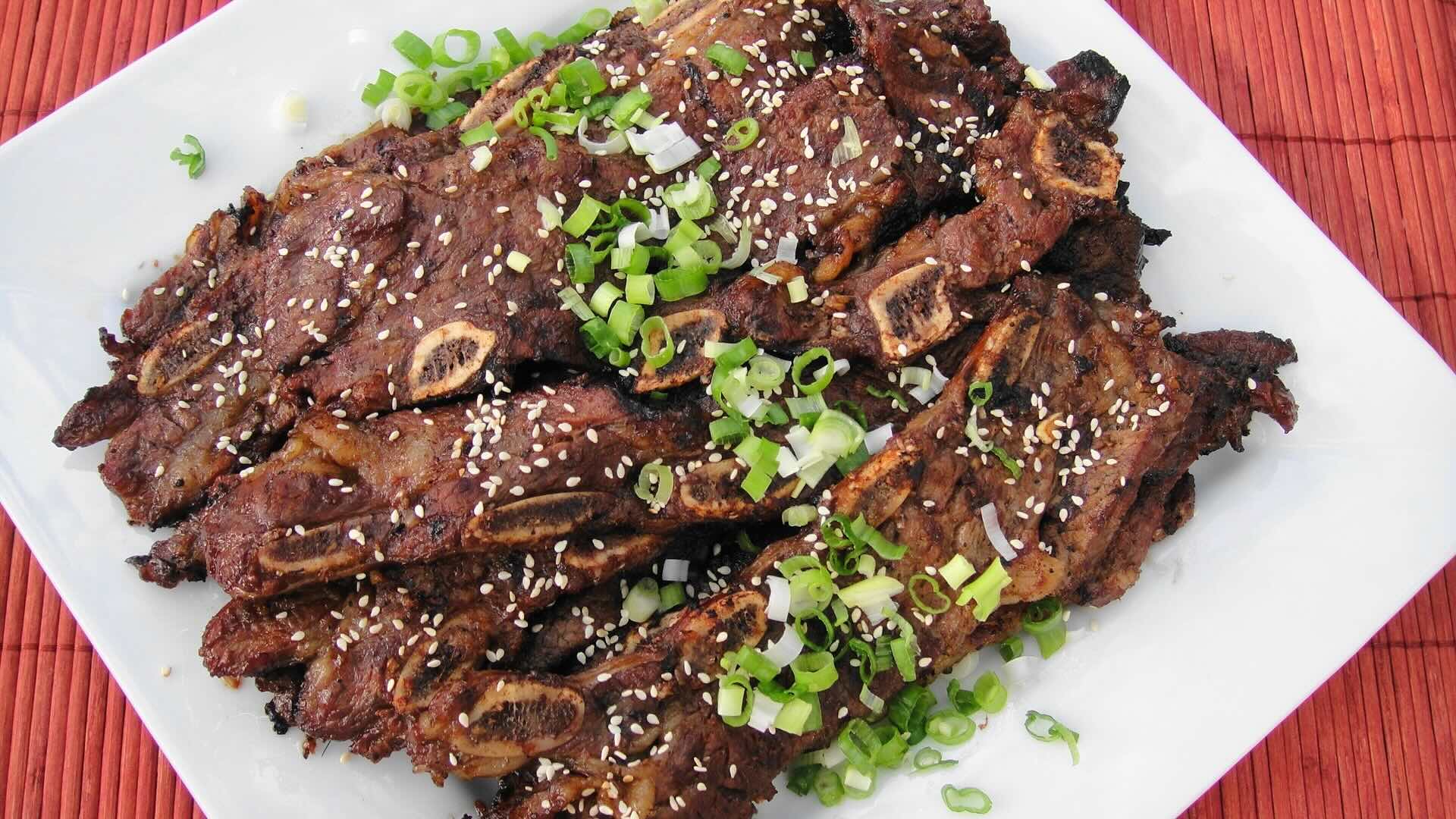
Kalbi, also known as Galbi, is a popular Korean dish that has captured the hearts and taste buds of food lovers worldwide. But what makes this dish so special? Kalbi consists of marinated beef short ribs, typically grilled or broiled to perfection. The marinade, a blend of soy sauce, sugar, garlic, and sesame oil, infuses the meat with a rich, savory flavor. This dish isn't just about taste; it's a cultural experience that brings people together. Whether you're a seasoned foodie or new to Korean cuisine, Kalbi offers a delicious introduction to the flavors of Korea. Ready to learn more? Let's dive into 29 fascinating facts about Kalbi!
What is Kalbi?
Kalbi, also known as Galbi, is a popular Korean dish featuring marinated beef short ribs. This savory delight has captured the hearts and taste buds of many around the world. Let's dive into some fascinating facts about Kalbi.
-
Kalbi means "rib" in Korean. The name directly translates to "rib," indicating the primary ingredient of the dish.
-
Traditionally made with beef short ribs. While beef is the most common, variations with pork or chicken exist.
-
Marinated in a sweet-savory sauce. The marinade typically includes soy sauce, sugar, garlic, sesame oil, and sometimes fruit like pear or apple for added sweetness.
-
Grilled to perfection. Kalbi is usually grilled over an open flame, giving it a smoky, charred flavor.
-
Served with banchan. These are small side dishes that accompany the main course, including kimchi, pickled vegetables, and more.
-
Popular in Korean BBQ. Kalbi is a staple in Korean BBQ restaurants, where diners often grill the meat themselves at the table.
The History of Kalbi
Understanding the history of Kalbi provides insight into its cultural significance and evolution over time.
-
Originated during the Joseon Dynasty. Kalbi has roots dating back to the Joseon Dynasty (1392-1897).
-
Initially a royal dish. It was once a luxury enjoyed by the royal family and the wealthy.
-
Became popular among commoners. Over time, the dish became accessible to the general population.
-
Influenced by Japanese occupation. During the Japanese occupation of Korea (1910-1945), grilling techniques and flavors were influenced by Japanese cuisine.
-
Post-war popularity. After the Korean War, Kalbi gained international fame as Korean immigrants introduced it to other countries.
Nutritional Facts about Kalbi
Kalbi isn't just delicious; it also has some interesting nutritional aspects.
-
High in protein. Beef short ribs are a great source of protein, essential for muscle growth and repair.
-
Rich in iron. Iron is crucial for transporting oxygen in the blood.
-
Contains essential vitamins. Kalbi provides vitamins B12 and B6, important for brain health and energy metabolism.
-
Moderate fat content. While tasty, Kalbi can be high in fat, so it's best enjoyed in moderation.
-
Marinade adds antioxidants. Ingredients like garlic and sesame oil have antioxidant properties.
Cooking Techniques for Kalbi
Different cooking methods can bring out unique flavors and textures in Kalbi.
-
Grilling is traditional. Open-flame grilling is the most authentic way to cook Kalbi.
-
Can be broiled. For those without a grill, broiling in the oven is a good alternative.
-
Slow-cooking for tenderness. Slow-cooking the ribs can make them incredibly tender.
-
Pan-frying is an option. Pan-frying can give a similar charred effect if grilling isn't possible.
-
Sous-vide for precision. Sous-vide cooking ensures the meat is cooked evenly and retains moisture.
Cultural Significance of Kalbi
Kalbi holds a special place in Korean culture and cuisine.
-
Symbol of celebration. Often served during holidays and special occasions.
-
Family gatherings. A popular dish for family meals and gatherings.
-
Represents hospitality. Serving Kalbi to guests is a sign of respect and hospitality.
-
Featured in Korean dramas. Frequently seen in Korean TV shows and movies, showcasing its cultural importance.
-
Influences fusion cuisine. Kalbi has inspired many fusion dishes, blending Korean flavors with other culinary traditions.
Fun Facts about Kalbi
Some quirky and fun tidbits about this beloved dish.
-
Kalbi tacos. A popular fusion dish combining Korean and Mexican flavors.
-
World records. South Korea holds records for the largest Kalbi BBQ events.
-
Kalbi festivals. Annual festivals celebrate this dish, featuring cooking contests and tastings.
Final Thoughts on Kalbi
Kalbi, with its rich flavors and cultural significance, is more than just a dish. It's a testament to Korean culinary artistry and tradition. From its origins in royal courts to its place in modern barbecues, Kalbi has evolved while retaining its essence. The marinade, a blend of soy sauce, garlic, sugar, and sesame oil, creates a symphony of tastes that dance on your palate. Cooking methods, whether grilled or broiled, enhance its unique flavor profile. Beyond taste, Kalbi brings people together, fostering community and shared experiences. Whether you're a seasoned foodie or new to Korean cuisine, Kalbi offers a delightful journey through taste and tradition. So next time you're at a Korean restaurant or planning a barbecue, give Kalbi a try. Your taste buds will thank you, and you'll gain a deeper appreciation for this beloved dish.
Was this page helpful?
Our commitment to delivering trustworthy and engaging content is at the heart of what we do. Each fact on our site is contributed by real users like you, bringing a wealth of diverse insights and information. To ensure the highest standards of accuracy and reliability, our dedicated editors meticulously review each submission. This process guarantees that the facts we share are not only fascinating but also credible. Trust in our commitment to quality and authenticity as you explore and learn with us.
